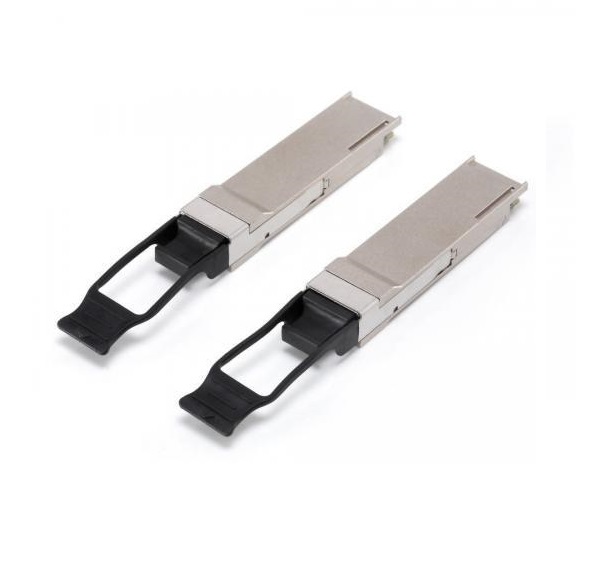- Sales SupportContact Sales
- Call us at: +(86) 15211074652
- Send us a email at: info@zr-fibercable.com
How to Choose the Right 100G QSFP28 Optical Transceivers?
With the increasing demand for higher bandwidth and faster data transmission in modern networks, 100G QSFP28 (Quad Small Form-factor Pluggable 28) optical transceivers have become crucial components for achieving high-speed connectivity. Choosing the right 100G QSFP28 transceivers requires consideration of several factors. In this article, we will discuss key aspects to consider when selecting 100G QSFP28 optical transceivers to ensure compatibility, performance, and optimal network functionality.
Compatibility:
a. Form Factor: QSFP28 transceivers are designed to fit into QSFP28 ports. Ensure that the transceiver form factor matches the port in your network equipment.
b. Connector Type: Check the connector type supported by the transceiver. Common connector types for 100G QSFP28 transceivers include LC (for single-mode and multimode fiber) and MPO/MTP (for multimode fiber).
c. Protocol and Application Support: Verify that the transceiver supports the specific protocol or application required for your network, such as Ethernet, Fibre Channel, InfiniBand, or SONET/SDH.
Fiber Type and Reach:
a. Single-Mode or Multimode: Determine whether your network requires single-mode or multimode fiber connectivity. Single-mode fiber is suitable for long-distance transmission, while multimode fiber is typically used for shorter distances.
b. Transmission Distance: Consider the transmission distance requirements of your network. Different transceivers offer varying reach capabilities, ranging from a few meters to tens of kilometers. Choose a transceiver with the appropriate reach for your network.
Data Rate and Transmission Speed:
a. 100Gbps or Higher: Ensure that the transceiver supports the desired data rate of 100Gbps. Some transceivers also offer higher data rates, such as 200Gbps or 400Gbps, for future scalability.
b. Error Correction and Forward Error Correction (FEC): Check whether the transceiver supports error correction mechanisms, such as FEC, to improve data transmission reliability.
Wavelength and Optical Specifications:
a. Wavelength: Verify that the transceiver operates at the required wavelength for your network, such as 850nm for multimode fiber or 1310nm for single-mode fiber.
b. Optical Power Budget: Consider the power budget of the transceiver, which determines the maximum allowable loss in the optical link. Ensure that the power budget is suitable for the distance and fiber type in your network.

Transceiver Features and Monitoring:
a. Digital Diagnostics Monitoring (DDM): DDM, also known as digital optical monitoring (DOM), allows real-time monitoring of various optical parameters, including optical power, temperature, and voltage. Check if the transceiver provides DDM functionality, which can assist in network troubleshooting and performance optimization.
b. Transceiver Options: Some transceivers offer additional features like tunable wavelengths or different operating temperature ranges. Evaluate these options based on your specific network requirements.
Quality and Reliability:
a. Vendor Reputation: Consider the reputation and reliability of the transceiver manufacturer or supplier. Choose reputable vendors known for producing high-quality transceivers that meet industry standards.
b. Compliance: Ensure that the transceiver complies with relevant industry standards, such as the Multi-Source Agreement (MSA), ensuring compatibility with a wide range of network equipment.
Cost Considerations:
a. Budget: Evaluate your budget and consider the cost of the transceivers. While it's essential to find cost-effective options, prioritize quality and compatibility to avoid potential performance or compatibility issues in the network.
Conclusion:
Selecting the right 100G QSFP28 optical transceivers is crucial for building a high-performance network infrastructure. Consider factors such as compatibility, fiber type and reach, data rate, wavelength, optical specifications, transceiver features, and reliability. Ensure that the chosen transceivers align with your network requirements and provide the necessary performance, scalability, and monitoring capabilities. By carefully evaluating these factors and choosing reputable vendors, you can make informed decisions and build a reliable and efficient 100G network.
You might be interested in
We use cookies to ensure that we give you the best experience on our website. By clicking on "Accept" or continuing to use this site, you agree to our use of cookies in accordance with our Cookie Policy .You can refuse the use of cookies here.
Accept

